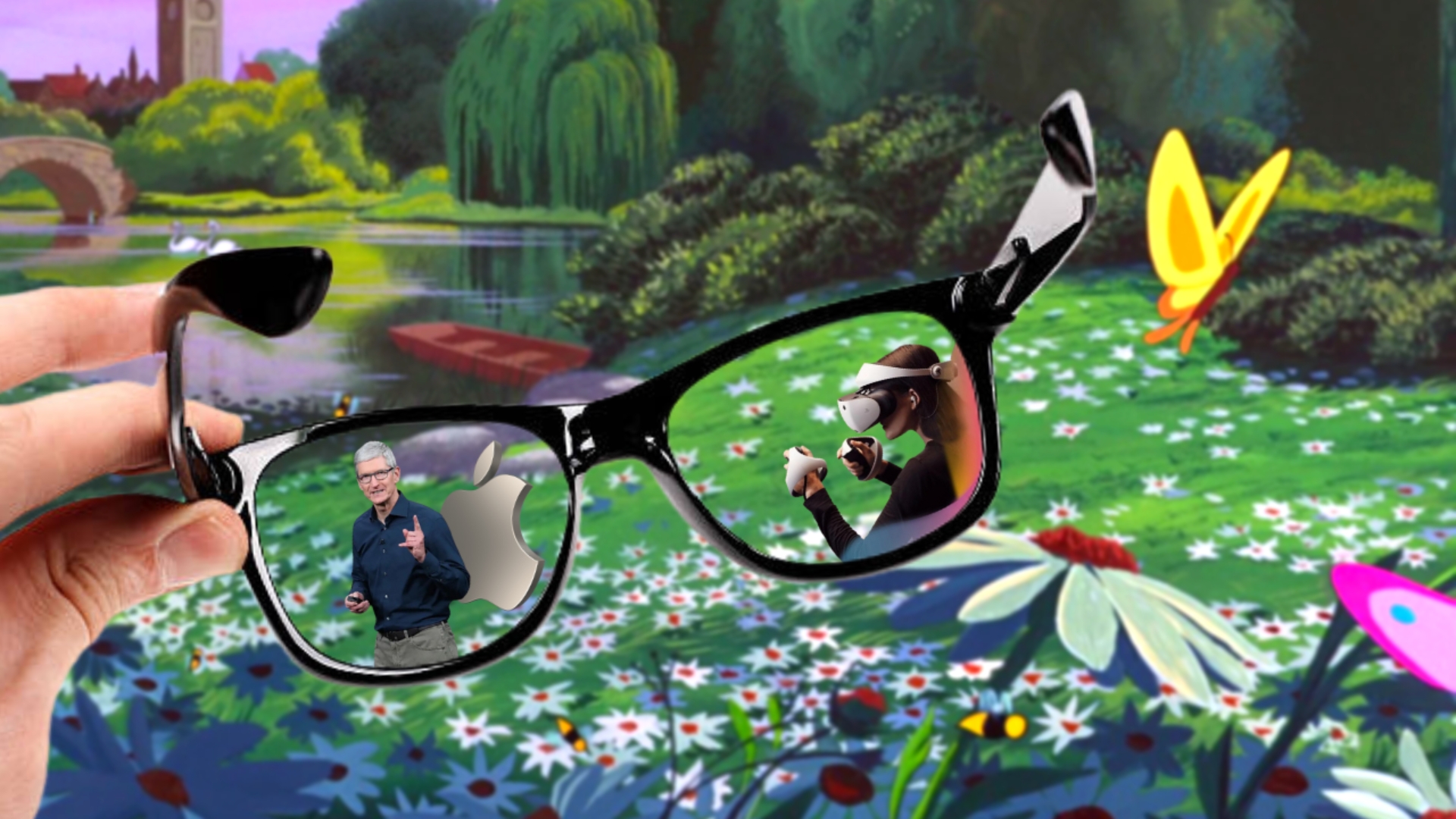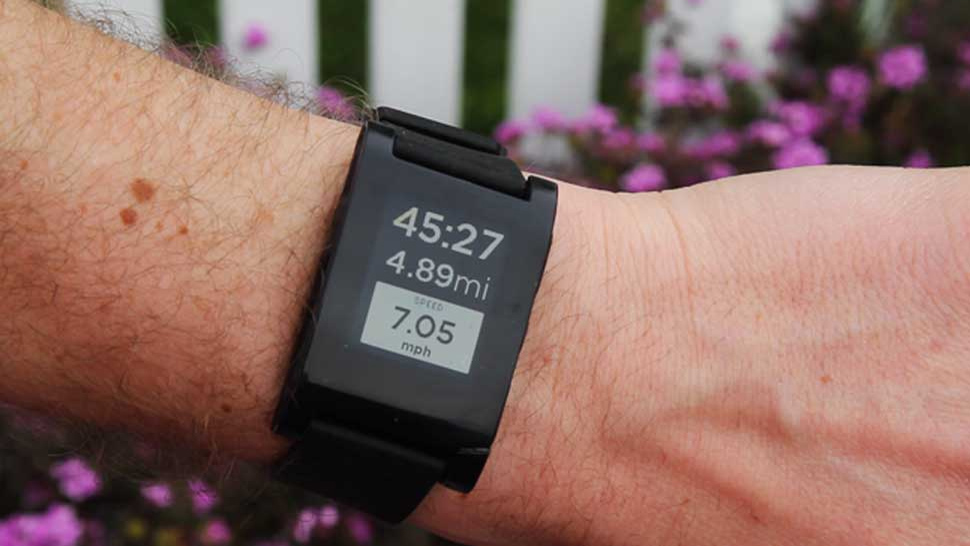CES was a wonderland for new VR and AR tech, but where will Apple's headset fit in?
Peeking through the looking glass at mixed reality, AR, VR and what’s to come in 2023

With CES 2023 coming to a triumphant end in Las Vegas, the dust is already beginning to settle on everything unveiled and shown off at the event with no shortage of winners and losers among it all.
While the likes of TVs, laptops, headphones and other usual suspects made their expected appearances at the event, the unveiling of a surprising number of new augmented reality (AR) glasses as well as virtual reality/mixed reality (VR/MR) headsets arguably stole the show.
And with rumors about Apple’s long-awaited entry into the VR/AR (and mixed reality) space also now heating up, there are a lot of reasons for high hopes and expectations for virtual, augmented and mixed reality tech in 2023.
But is it all worth the hype?
The mystery of ‘mixed reality’
Besides the appearance of Sony PlayStation’s highly anticipated PSVR 2 headset on the showfloor, arguably the title of the highest profile new AR or VR gadget to appear at CES belongs to the HTC Vive XR Elite – the latest headset from VR market regulars HTC.

Unlike previous HTC headsets though, the HTC Vive XR Elite (due to launch in February) considers itself a lot more than a VR headset, with the addition of augmented and mixed reality functionalities also added in. Yes, these are all different and this widened scope of focus instantly puts the new headset forward as a direct competitor to the similarly-focused Meta Quest Pro released last year and the rumored Apple headset on the horizon.
But what does ‘mixed reality’ mean exactly?
Sign up for breaking news, reviews, opinion, top tech deals, and more.
Before hoping to understand mixed reality, it’s first worth revisiting the definitions of and differences between both augmented reality (AR) and virtual reality (VR).
We’ve explained this in a previous article but, to reiterate, virtual reality is engineered to place a user in a brand-new world (or reality) that they can explore, while augmented reality offers users a different world by adding new elements to the existing reality around them.
And this is where defining mixed reality can get a little bit messy.
Mixed reality, or MR, is somewhat frequently mistaken as being simply a catch-all umbrella term that includes both augmented reality and virtual reality. Confusingly, this is a designation better suited to defining ‘extended reality’ (XR), which encompasses AR, VR and MR.
This suggests that MR is its own technology which, puzzlingly, is both true and untrue simultaneously.
Mixed reality is best described as an extension of augmented reality, incorporating elements found in virtual reality to distinguish itself from AR alone (hence ‘mixed’). While MR offers opportunities to add to the existing reality just as AR does, it does so in a far more engaging way than AR alone. For example, if an AR app on your phone shows you a giant whale in the sky above you, a mixed reality headset will let you walk up to the whale and let you give it a virtual head pat. As you can tell from our use of the word ‘headset’, MR requires additional gear like VR does, leaving the users hands free to give said head pat. This, in an oversimplified nutshell, is mixed reality.

If the idea of being able to play Pokémon Go and virtually cuddle a Squirtle sounds appealing to you, you’re not alone, but the broad success of MR gadgets nonetheless remains at a standstill.
Until Apple comes through with concrete information about its long-rumored mixed reality headset, MR gadgets in the form of bulkier headsets simply don’t look like moving the dial for average consumers in any significant way. This is in large part due to the high price tags attached to MR headsets. For example, the HTC Vive XR Elite is set to cost around $1,099 / £1,299 / AU$2,300 at launch, pricing it only slightly lower than the Meta Quest Pro which features similar mixed reality capabilities.
And if the HTC Vive XR Elite managed to excite and disappoint at the same time at CES, it wasn’t alone.
AR shows promise and problems at CES 2023
CES saw as many as four new sets of AR glasses take to the floor this year, with the likes of the previously released Magic Leap 2 joined by new showings from TCL, Lumus and Vuzix, among others. And while they all show plenty of promise, with TechRadar particularly impressed by the offering from Lumus, it’s fair to suggest that they also demonstrated some troubling and familiar problems.
After all, the idea of augmented reality isn’t new, going back about four centuries.
Italian scholar Giambattista della Porta speculated on the same core idea driving AR today in his book Magia Naturalis, first published in 1558. His description of a glass pane being used to reflect and position light in order to create illusions of objects appearing where they otherwise aren’t would later be brought to life in the mid-19th century as an illusion for stage shows. And this “Pepper’s ghost” illusion remains in use, with the technique not far removed from how augmented reality technology is made to work today in AR glasses.

AR applications through wearable glasses haven't quite had the same success that Pepper’s Ghost had for 19th century stage shows.
When Google Glass launched in 2014, it created plenty of excitement, but its high price and then-limitations to the technology acted as considerable barriers to its success. Consequently, it has since disappeared, with Google seemingly backing off from AR glasses.
And similar problems are still plaguing the new models, chief of which is the general clunkiness of how the glasses handle some tasks. More often than not, applications either disappoint or fail entirely, while others are too dependent on external factors like lighting conditions. AR glasses that have images disappearing or growing dim in certain situations aren't going to impress anyone or tempt them to part with their money.
Getting your hands on the Magic Leap 2, for example, will set you back at least $3,299 (approximately £2,710 / AU$4,771). Even with the Magic Leap 2’s reported focus on appealing to business and industry, it’s hard to imagine the item getting off the ground in any substantial way at this price point given the issues still being suffered by the technology.
The other AR glasses debuted at CES, such as the Vuzix Ultralite, TCL’s RayNeo X2 and the Lumus Z-Lens, don’t yet have concrete pricing or release dates but, despite impressive debuts on the CES 2023 showfloor, the technology still isn’t where it needs to be yet.
But it would seem there is greater hope on the horizon.
Apple holds MR’s future in its hands
There’s no reason to think that MR headsets and AR glasses will entirely fail as gadgets, but if the promising future for these technologies is to come anytime soon it will likely rely on what Apple has in store.
While exact specs and details on what Apple’s MR headset will look like remain elusive, it’s highly likely that it will be the ignition this space needs, regardless of whether it succeeds or fails. That’s because of Apple’s profile in the tech world.
A valuable comparison point would be in the area of smartwatch technology.
Before the debut of the Apple Watch, the smartwatch market was largely stagnant, with the existing tech mostly falling into the territories of niche items, such as with the early 2000s Swatch Paparazzi and ventures from now defunct smartwatch hopeful Pebble.

Since Apple’s debut into this space, however, the smartwatch market has exploded.
And while AR/VR/MR technologies might not lend themselves as well to widespread consumer adoption as smartwatches, there is nonetheless cause for great excitement about what Apple’s emergence into the space will lead to.
So, even though what we saw at CES 2023 might have been enough to capture our attention, the real cause for excitement about the future of AR/VR/MR comes from something that we didn’t see in Las Vegas this year.

James is a senior journalist with the TechRadar Australia team, covering news, analysis and reviews in the worlds of tech and the web with a particular focus on smartphones, TVs and home entertainment, AR/VR, gaming and digital behaviour trends. He has worked for over six years in broadcast, digital and print journalism in Australia and also spent time as a nationally recognised academic specialising in social and digital behaviour trends. In his spare time, he can typically be found bouncing between one of a number of gaming platforms or watching anything horror.